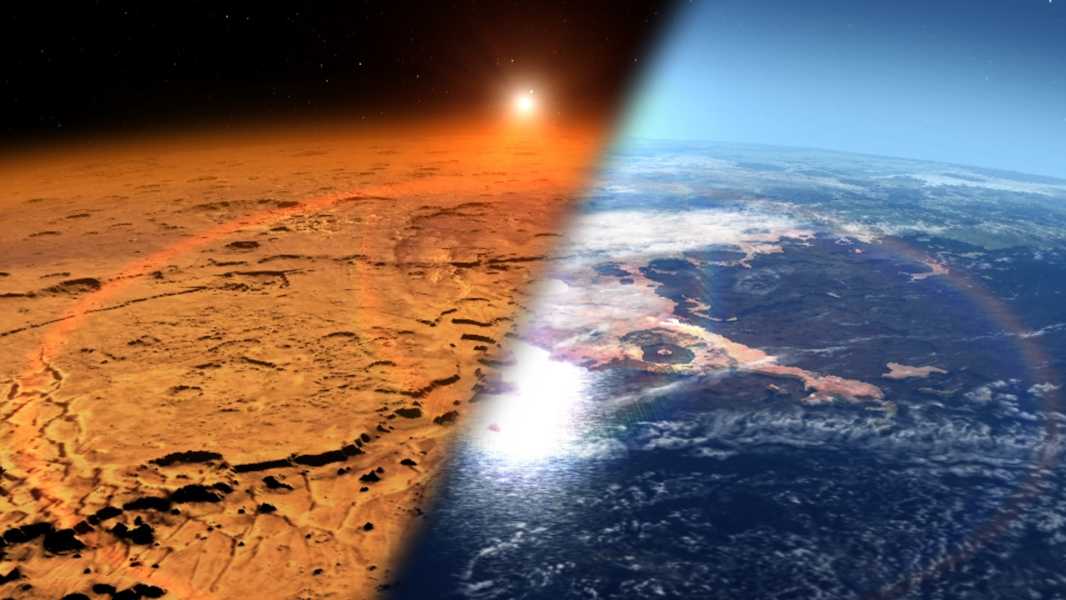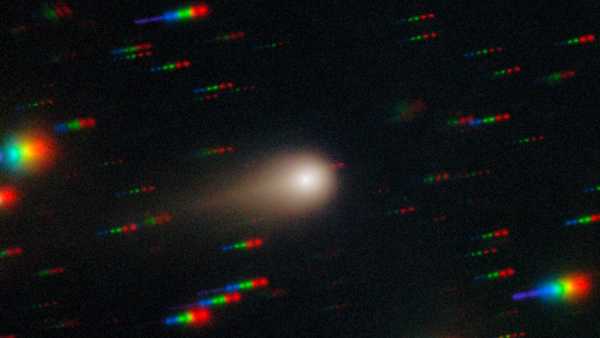
This artist's impression shows the early Martian environment (right) with liquid water and a thicker atmosphere, in contrast to the cold, dry environment seen today (left). (Image courtesy of NASA's Goddard Space Flight Center)
After nearly a decade in orbit, NASA's MAVEN spacecraft has for the first time directly observed the process that researchers have long suspected is causing the loss of Mars' atmosphere.
The findings, published May 28 in the journal Science Advances, could shed light on a long-standing question about how Mars transformed from a potentially habitable world with rivers and lakes into the mostly frozen wasteland we see today.
Although Mars is now dry, cold, and nearly airless, its surface is littered with compelling evidence of a wetter past. Landforms resembling ancient river valleys, lake basins, and minerals that only form in the presence of water indicate that long-lived lakes, perhaps even shallow seas, once flowed across the surface of Mars billions of years ago. However, to retain liquid water, the planet would have needed a much thicker atmosphere to trap heat and maintain higher surface pressure. Understanding when and how that atmosphere disappeared is critical to reconstructing the evolution of Mars’s climate and determining how long it might have remained habitable.
You may like
Sourse: www.livescience.com





